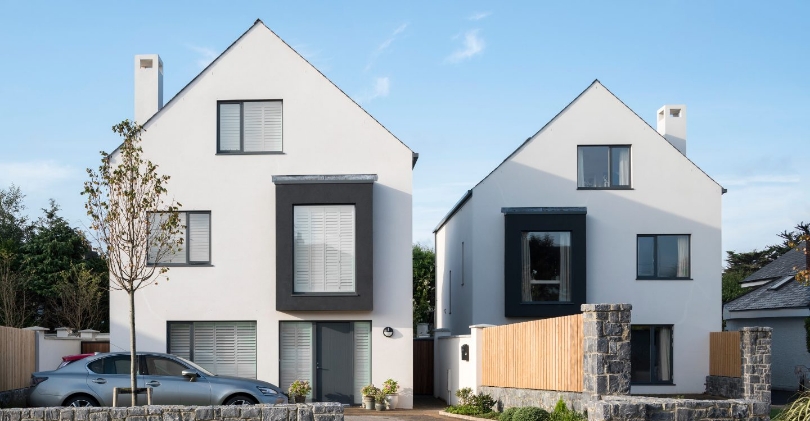What is render?
Render is the first application of cement to an external or internal wall, be that concrete or brick. It’s done to protect the underlying house walls from weather, such as rain or frost, and it can also give your house that attractive appearance you’ve been looking for. There are benefits and drawbacks to render, as there are to everything, but we’ll break it down for you.
Benefits
There are plenty of benefits to using render for your home. Render comes in a range of different colours, such as Moonscape by ParexMonorex GM, or Smoky Grey. This means you don’t have to paint it every five years; the colour is mixed in with every part of the render, so it won’t chip away like paint does over time.
Based on your preference and your renderer’s skills, your render can be given different textures for different aesthetic outcomes. Investing in render can make your house more attractive, and therefore add house value, depending on your area. Not only that, but render can improve the thermal performance of your home, saving you money in the long run with your heating bills!
The best news? Your render should last from 20-30 years, which means it’s a low maintenance way to save money over time!
Drawbacks
There are a few drawbacks to using render on your property. Rendering your home can cost a lot up front, depending on which kind of render you use, and how you choose to apply it, especially if there is a large surface area to cover. Adding to this cost is labour; render is not something we recommend to DIY. It takes an experienced renderer to get that smooth, uniform result that provide the aesthetic preferred by most. At Rendit, we have a list of approved renderers based on your area. Find an approved renderer here. Despite this drawback, keep in mind that the render will save you money in the long run from your heating bills to additional house value.
Always remember: buy cheap, buy twice.
Different types of Render
Lime render has a creamier texture than other types, which allows it to become more elastic and therefore less prone to cracking after it dries. The benefit of lime render is its breathable quality, protecting a home from the weather without smothering it. Unfortunately, this can be difficult to apply, which is the reason we suggest you find an approved renderer to carry out your project if lime render is your choice.
Acrylic render is a top coat, applied as a thin finish to seal and enhance the appearance of an underlying coat. Fibres are added to prevent cracking and give a durable finish that lasts.This is the cheapest option of render, and it comes in a variety of vibrant colours, but keep in mind that it is not breathable which can cause issues if your house needs to breathe.
Often called thin coat renders, silicone render needs a basecoat. It can take longer to apply, and must rely on the weather in order to dry efficiently; these types of render are usually installed during summer, as it needs milder temperatures in order to dry. Despite taking longer to apply and being the most expensive option, this render can last longer than most other renders, which makes it a strong competitor. Silicone render, once dried, is crack resistant and flexible, with a range of colour options to choose from. It is self-cleaning, waterproof, and breathable.
Traditional Sand and Cement
Cement can be cheap with regard to materials, but it is expensive when it comes to labour, because this type of render requires multiple coats. Unfortunately, it can be prone to developing small cracks over time that allow rain and frost to penetrate, which can loosen the bond between cement and the building. Not only that, but it will require regular painting to keep your property looking in tip top shape. This type of render is not one we recommend if you want a long-lasting, energy efficient aesthetic to your home.
Conclusion
Overall, when you look at the benefits and drawbacks of render, you understand that render might seem like an upfront cost, but the savings you make over time, and the improvements made to your home make it more than worth it. Need some more convincing? You can look at images of rendered homes here.
When looking to render your home, you should always do your research into which would be best for your property; no property is the same, and no approach to render is either. Consult your renderer if you’re not sure, and they will help you come to the best decision for your home.
Next step: are you ready to render your home?


